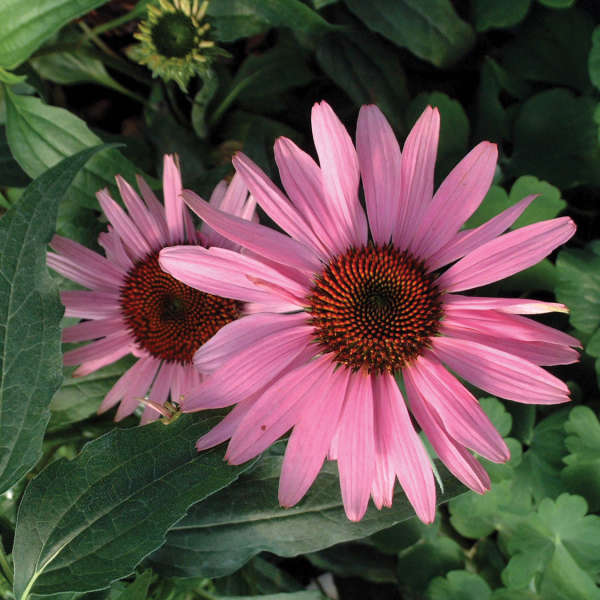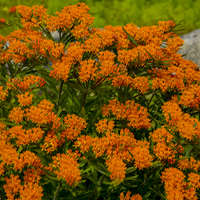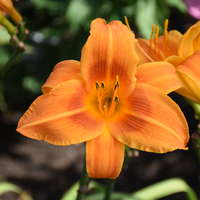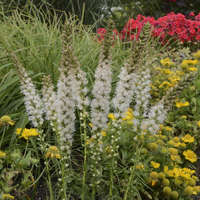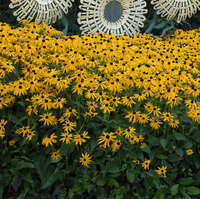Echinacea purpurea 'Ruby Giant'
Common Name: Purple Coneflower
Absolutely huge, 7 inch wide, ruby pink blooms with recurved ray petals are held high above dense mounds of foliage. The central cone is coppery-orange and flattened. This cultivar originated as a sport of E. 'Rubinstern' and was selected for its impressive size and refined habit. 'Ruby Giant' is destined to become a classic Echinacea.
Praised for their large, daisy-like flowers which appear from midsummer thru fall, after many other perennials have finished blooming, Coneflowers are a mainstay in today's garden. If deadheaded, the bloom cycle will be extended. However, some spent blooms should be left on the plants in fall because their seeds provide winter food for finches and other birds. The dried seed heads also provide architectural interest in the winter.
